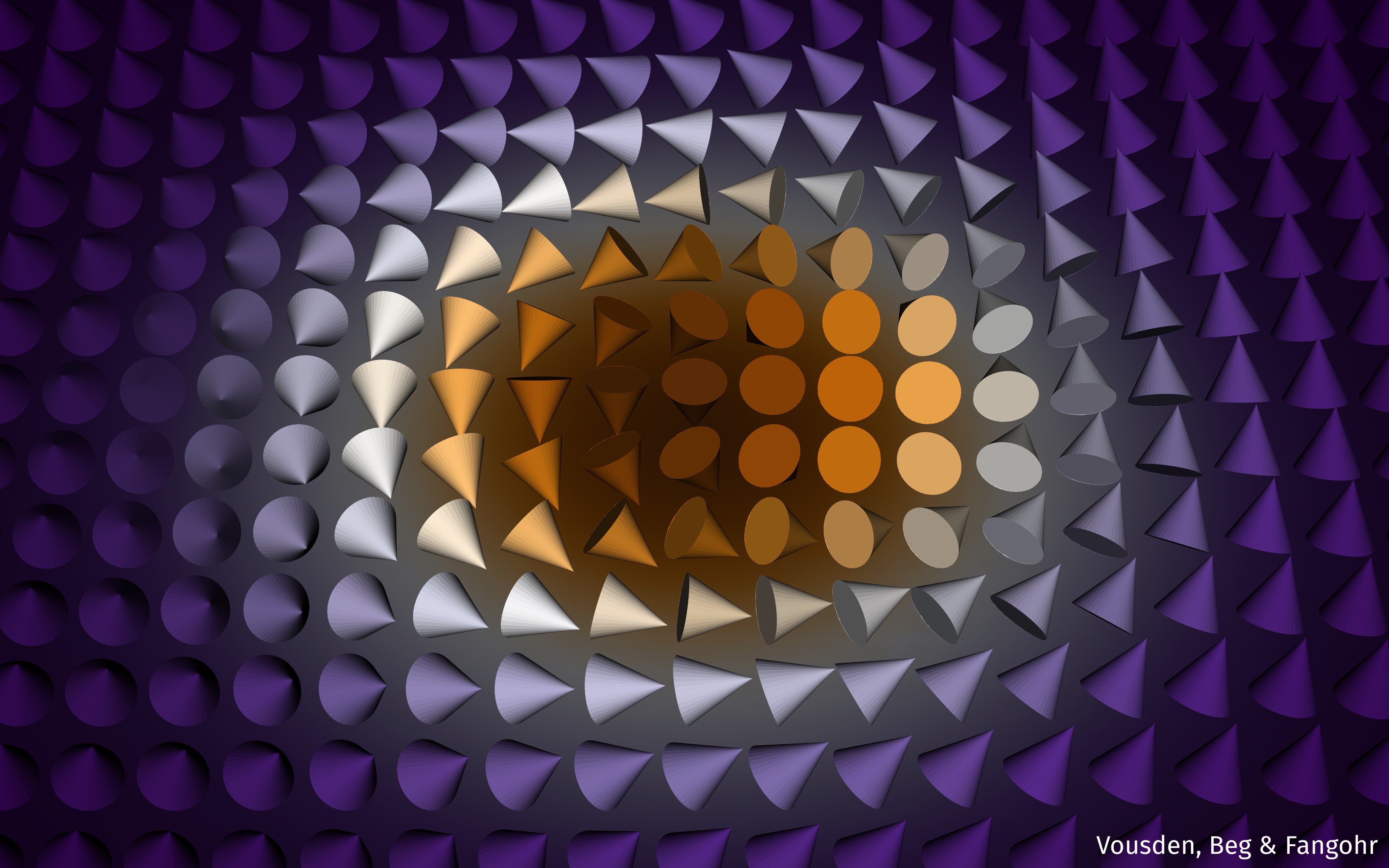Skyrmion Scientists win Postgraduate Prizes

Two Postgraduate students in the Condensed Matter Physics research group, Max Birch and Luke Turnbull, were recently were awarded postgraduate prizes by the Departmental Postgraduate Committee.


Max Birch, pictured above left, undertaking an experiment at a synchrotron, won the Alan Martin Doctoral Prize for the best PhD thesis in Physics. Max was the recipient of a JSPS summer fellowship in his first year and spent the summer of 2017 in Tokyo working with the world leading group at RIKEN including Dr S. Seki and Professor Y. Tokura. Max was the first to recognise the improved metastability of skyrmions in doped materials, and the first to experimentally observe skyrmion tubes. He is very focussed on how to tell complex physics in a simple and dramatic fashion, often with highly effective visual diagrams. He was the first PhD student to finish his doctoral studies from the UK Skyrmion Project. His thesis was entitled “Dynamics of Metastable Magnetic Skyrmions” and the PhD examiners found his thesis to be of outstanding quality, as testified by its high visibility and impact in the field of skyrmionics. Max is currently a Postdoctoral Research Assistant at the Max Plank Institute for Intelligent Systems in Stuttgart, Germany developing time-resolved imaging of skyrmions using scanning transmission x-ray microscopy.
Luke Turnbull, pictured above right, clearly enjoying a break from work, won the Graham Russell Prize on the basis of outstanding overall performance in applied Physics. Luke has focussed his research on how to directly image and manipulate skyrmions. Using coherent diffraction of polarised soft x-rays from synchrotron sources, Luke has developed techniques to obtain x-ray holograms. He has become an expert in the image reconstruction and filtering of holograms. These provide a real space visualisation of magnetic skyrmions that compliments the reciprocal space diffraction imaged through small angle x-ray scattering. One of the first projects that Luke undertook was a study of biskyrmions, believed to be molecules of opposite chirality skyrmions. These had been found in centrosymmetric alloys such as MnNiGa and Luke and co-worker James Loudon (Cambridge) actually found that these samples displayed type II magnetic bubbles. Since then Luke has developed the technique further and demonstrated how three-dimensional information can be obtained by taking holograms of tilted samples. He has recently undertaken a breakthrough study using a new beamline at the SOLEIL synchrotron in Paris to undertake
the first x-ray ptychography images of skyrmions and antiskyrmions, and obtained a world record resolution of just 10 nm. Luke is now a world expert in the field and developing new techniques to observe the motion of skyrmions in model devices for magnetic memory and computation.


/prod01/prodbucket01/media/durham-university/departments-/physics/teaching-labs/VT2A9034-1998X733.jpeg)